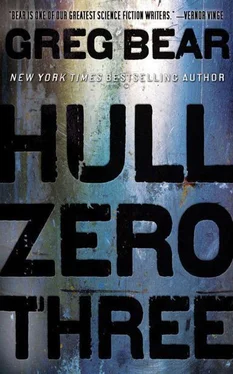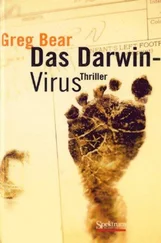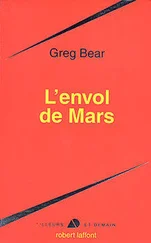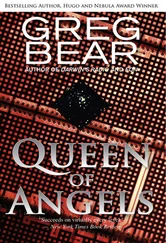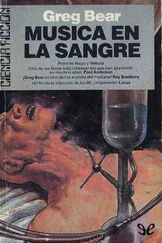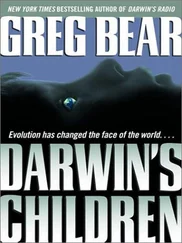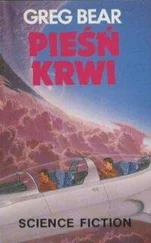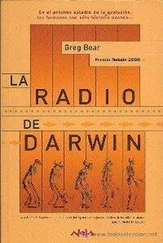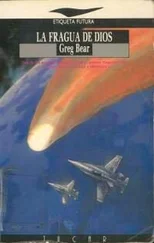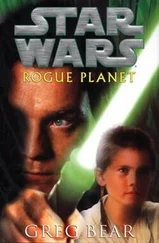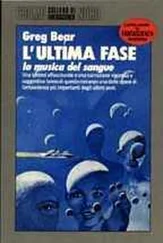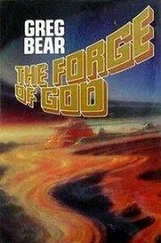“We said nothing,” a daughter says.
I wave my hand. We move outboard. This is my life.
As we proceed, I feel a judder. Actually, drifting along, at first I see it more than I feel it. I wonder if it is my eyes or the walls that are vibrating. My long, echoing “stride” brings my foot in contact, and then I feel an unfamiliar subsonic quiver.
There is definitely change coming. Whether it is caused by impacting stardust, or by Mother, or by our people in the bow is impossible to know. If we’re returning to the earlier phase of swift rotation, then things might go badly out here, our kilos converted to crushing weight.
We continue without pause. That is, the girls continue and I follow. Whatever happens is out of my control, but I am content to see that where we are is not where they wish to be. I assume we are moving outboard to find a forward-pointing corridor. But it soon becomes obvious that the hull’s rearrangement is more radical than they had hoped. We reach a fork, the corridor continuing outboard, but for a short distance, a pipe leads aft again—I think—about ten meters, ending in one of those rounded caps.
Taking advantage of the stop, I reach out to an oval, let out an exclamation, and draw back my hand. The pattern changes as I watch. The forking pipe grows shorter until it merges with the walls around us, then vanishes.
The daughters clutch my arms. We dangle, moving gently from wall to wall, and then one girl sighs. Both regard me with blank faces, let go, and push along the outboard-leading corridor. They’re probably thinking what I’m thinking. Where we are could close off at any moment, imprisoning us in hull metal, kicking and screaming until the glim lights go out and we run out of air.
I don’t need to think such thoughts. I want to be back in the bow, where I can eat and bathe and look out at the stars, as we were all meant to do.
I’d rather be in Dreamtime.
Or maybe not. After such knowledge.
My legs and arms hurt from the echoing gait of hands and feet, elbows and knees, butt or thigh or shoulder. I think on the design of the factors—Tsinoy, more efficient in weightlessness than the rest of us. Each in its place. The great chain of being, leading from the incomprehensibility of biological phase space, winnowed down to the virtual pages of the Catalog, through the chemical limits of the gene pool, and out through the material limits of birthing surfaces…
From stuff we are made… people stuff.
There must be methods of transporting that stuff around Ship. Do factors deliver barrels of it? Is it piped through small conduits in the hull metal like capillaries? Ship itself has many qualities of a living organism and yet maintains much of a mechanical nature.
In either case, plumbing is crucial.
“What if something is trying to cut off your mother’s supply chains?” I ask. The girls, ten meters ahead, as usual, do not seem to hear me. But what if Mother loses her ability to direct Ship? What if she dies? Does one of the daughters assume her role? Rounded collops of breasted tissue forming along a lamia length, hormones adapting their girlish minds to great Mothering thoughts, seeking a consort, birthing, nurturing, loving multitudes of daughters…
Sending them off to die?
The glim lights brighten. Again, I feel the corridor shiver, but we are nearing the end of our outboard leg. The corridor is getting wider. There is a hatch half open ahead, and through that opening comes a dense, hot, moist waft of indescribable spice. Not savory or herbal, not so much flowery, but sharp and compelling and yet frightening—something ever so much richer, stronger, more confident than mere humans.
We move toward the cap, the girls first, as usual, and before I can react, long ivory paws reach down and snatch them. The pair squirm and slap, but they make no other sound, simply rising in helpless fury through the cap, out of sight.
Silence.
I waver in the corridor. The girls were snatched by a Tracker. The only Tracker I know is Tsinoy—who I am convinced would not harm them. For some reason, I am not afraid—and I recognize the spicy scent now. I’ve smelled something like it before—when Tsinoy was lost in contemplation of the stars, or upset by other circumstances. But those effusions were mild compared to this overwhelmingly rich, acrid floweriness.
Something has really aroused her.
“Come on out,” Tsinoy says. “I’ve got them.”
“Why?” I yell.
“They were taking you to your death. Nell talks to Ship now.”
I’m still a little numbed by the perfume of the bower. “Why?” I ask again, like a dull child.
“Come up. We’re going where their mother doesn’t want us to go—through the oceans and back to the stars.”
The hull seems to sigh.
We travel aft for a time, the girls gripped firmly on the Tracker’s back in a tangle of rearranged muscle.
Then we head inboard along an unfamiliar conduit, perhaps newly created, back toward the center of the hull.
Tsinoy releases the girls at a fork that I suspect will lead them back toward the gene pool. They kick away, strong and silent.
We never see them again.
The Tracker examines our position, then tells me to follow. She seems to know where we are and where we need to go from here. “I have a new map,” she says.
“Where did you get it—from Ship Control?” I ask.
“No,” she says. “Nell spoke with Destination Guidance. They heard our prayer. They know us now.” This is like being told she spoke with some great outer deity—or the devil.
The prayer.
I had recited the prayer aloud while Nell was compacting the hulls. The others joined in—my twin did not. If we all know the prayer, then we must be marked by Destination Guidance.
“They’re real? They’re alive, not frozen?”
Glim lights brighten ahead. “That’s Nell,” Tsinoy says. “It means she knows where we are. Maybe she can help protect us.”
Before I can ask more questions, Tsinoy kicks off down the long cylinder. In my head, I vaguely sense we are outboard of the aft end of the water tanks, dropping toward the hull’s center. My mind becomes a blank again. I’m coasting behind a life-destroying monster who loves the stars. My head was once full of memories with little relevance to my actual world. I’ve met the woman of my dreams—and learned that not only is she nothing like I imagined her, but that she’s caused a significant portion of our hardship.
And the hidden deity we tried to kill might be our new ally.
I can’t encompass any of it, so I’ve stopped thinking.
No time at all passes before we reach the end of the inboard-pointing tube, and kick off into the aft tank cap, far from the path I took when I was in the charge of the daughters.
Tsinoy takes my hand. The reticulated surface of her paw-claw-hand is hot. But I have known frost to whiten that same cuticle. Perhaps she is made to survive under all conditions. What else can she do? Can she live without breathing?
The great blue eyes of the six tanks wheel and spin in slow majesty—but it’s me, in Tsinoy’s grip, who is wheeling and spinning like a paper toy in a huge wine cellar.
I see a cable and grab it, as does Tsinoy, and we conclude this part of our journey, a few meters from the edge of a tank, voids, sheets, and bubbles writing cursive on the other side.
We crawl along a layer of suspended cables to the opposite side of the chamber cap. Tsinoy leads me to an open hatch, which is crusted with age and jammed with disuse. Beyond stretches a maintenance corridor, smaller than most, more of a pipe and filled with debris, some of it cemented to the outboard curve from a succession of spin-ups, the rest messing the stale air. There’s been no attention paid to this part of the hull for a long time.
Читать дальше
